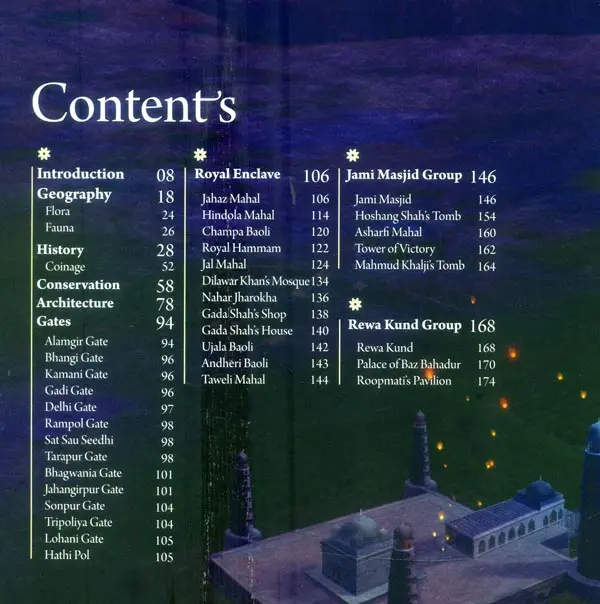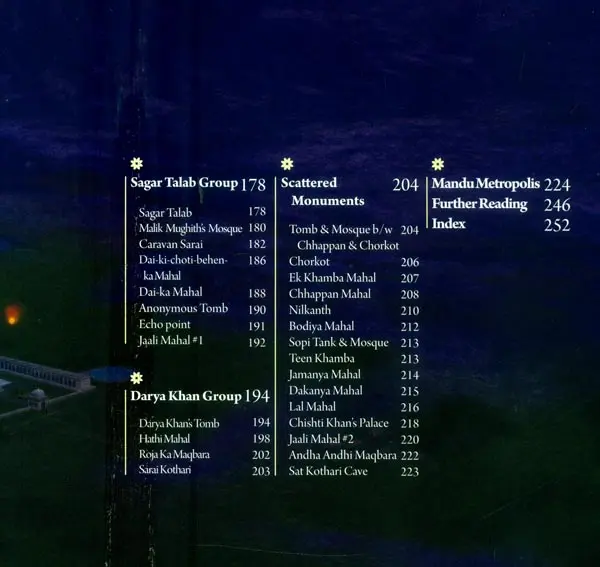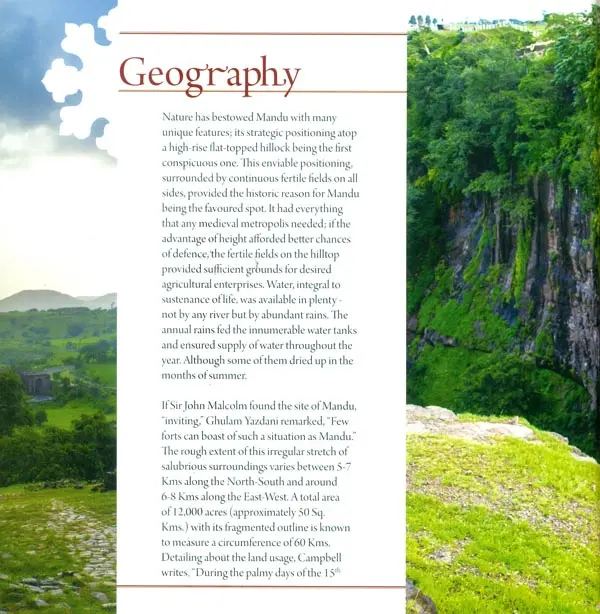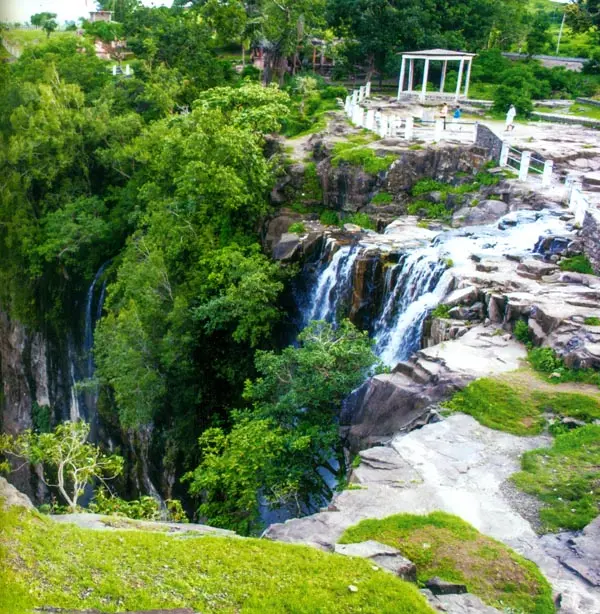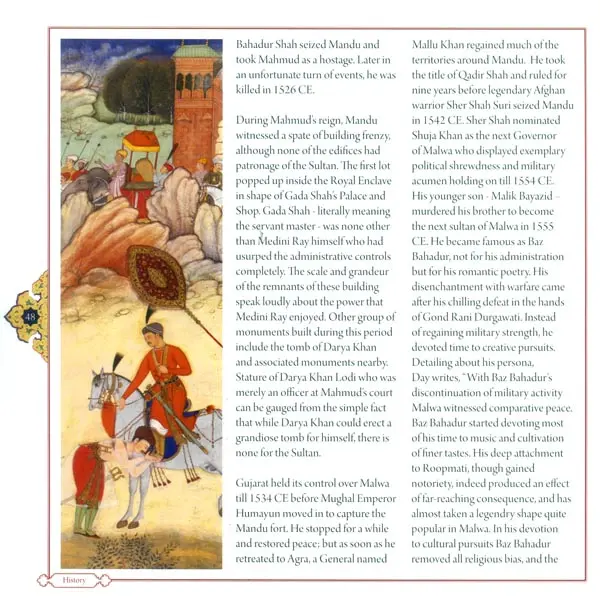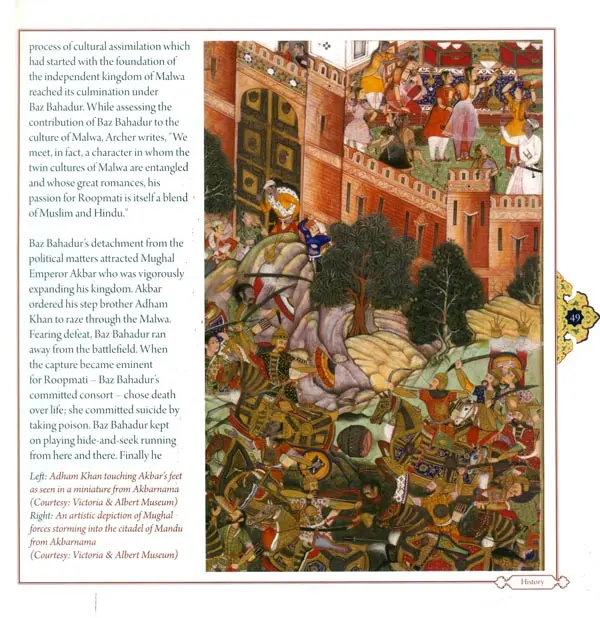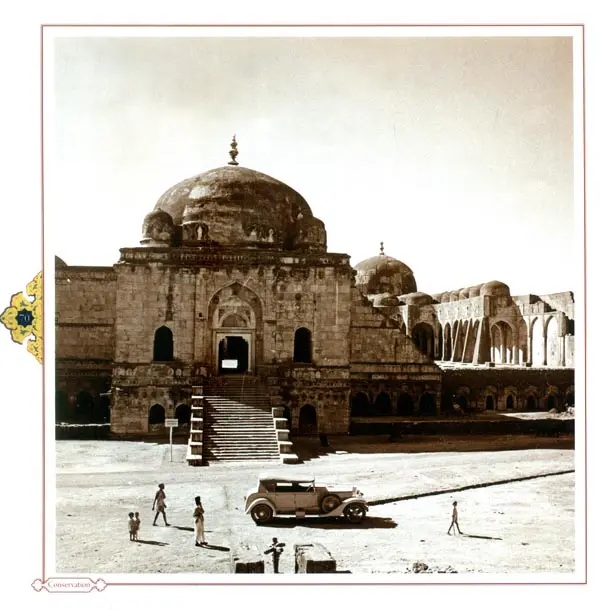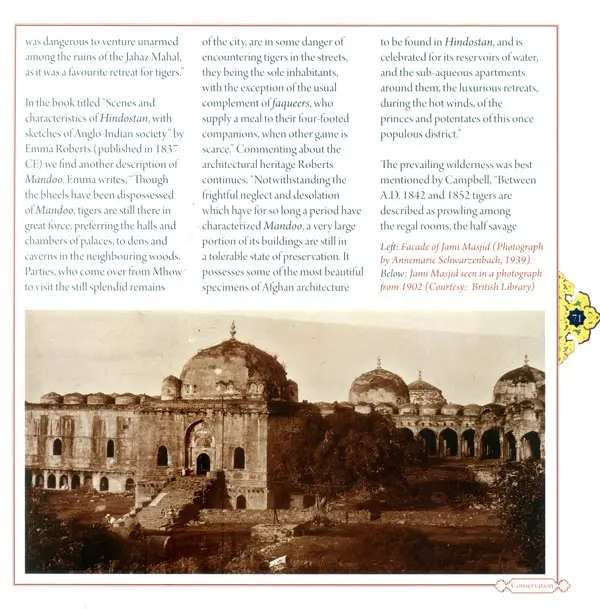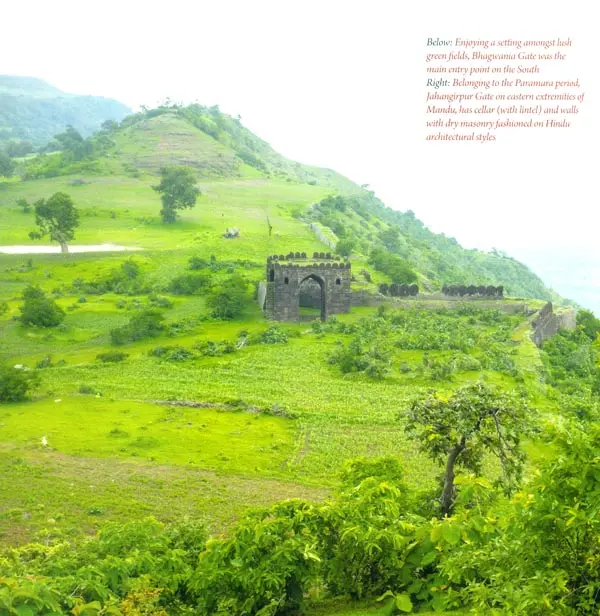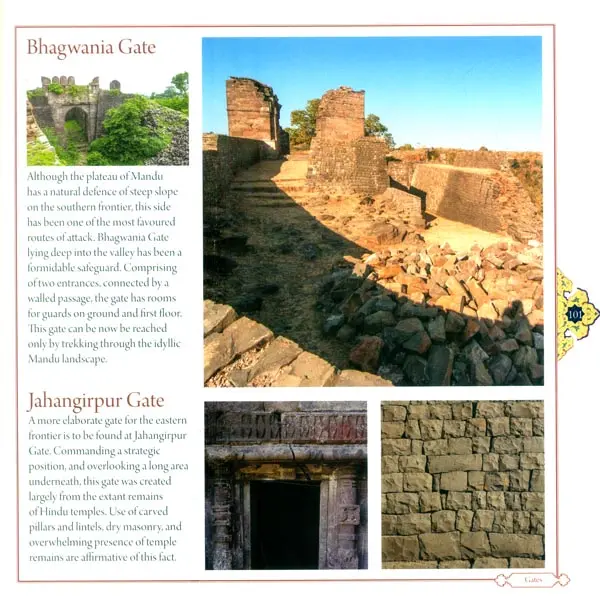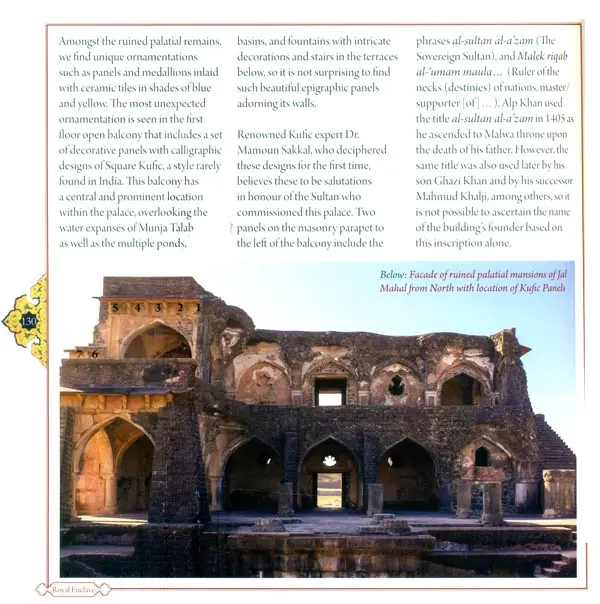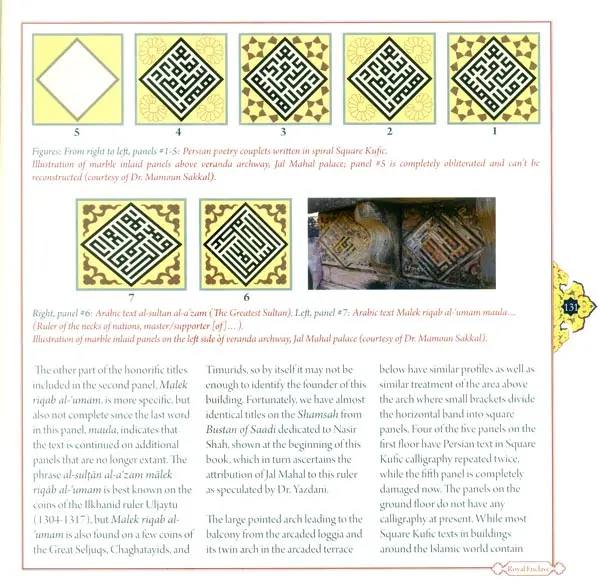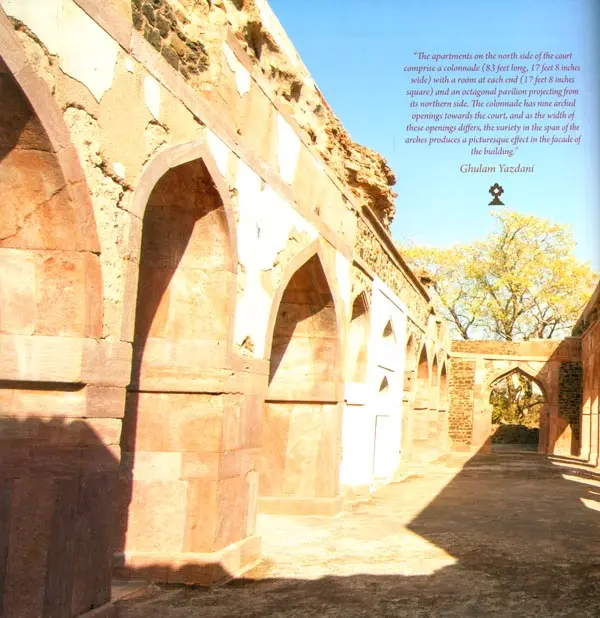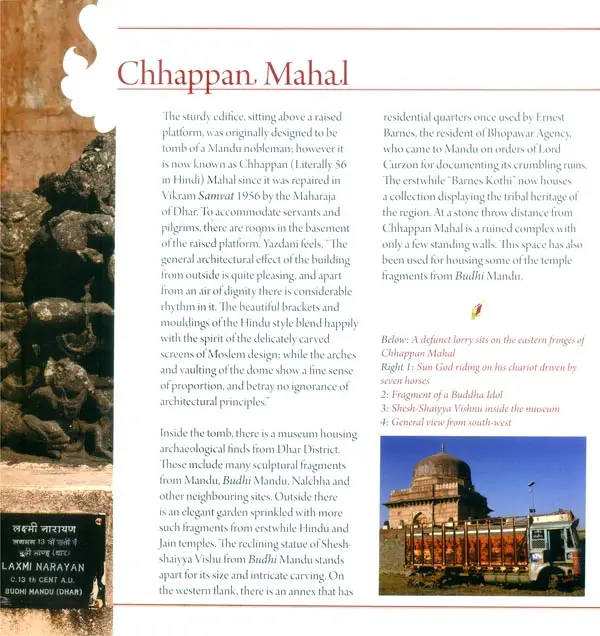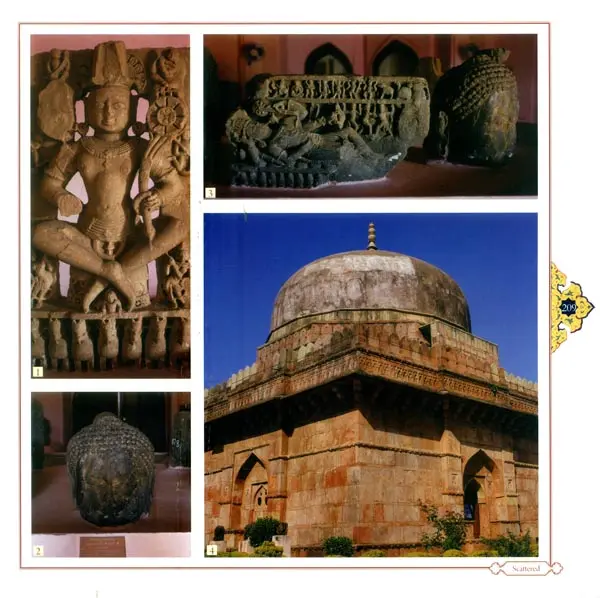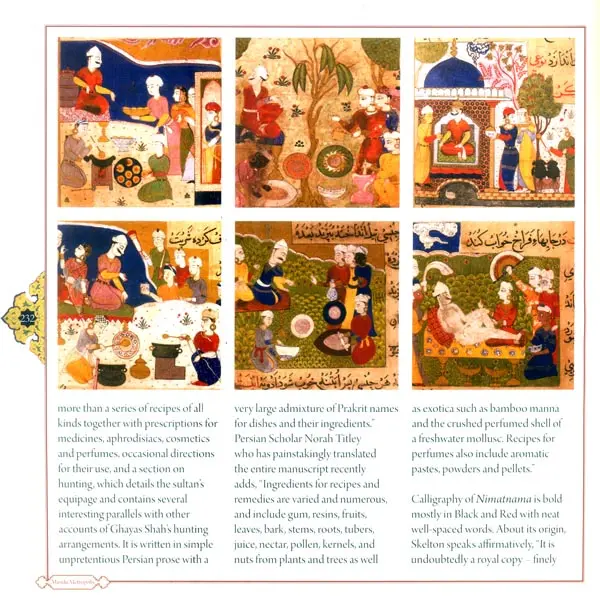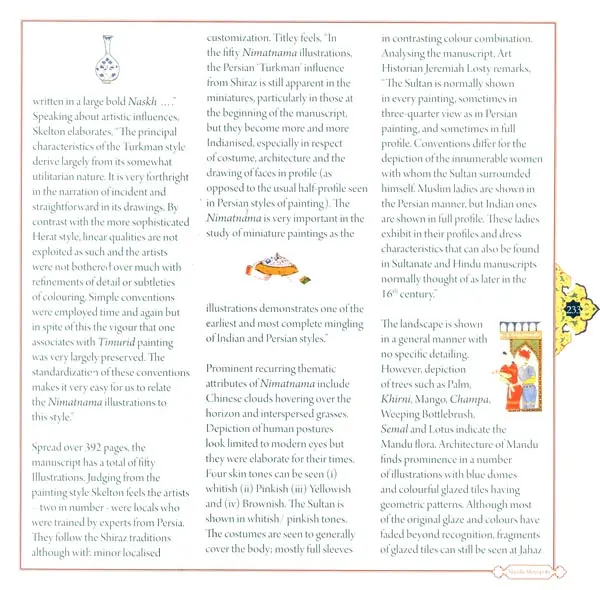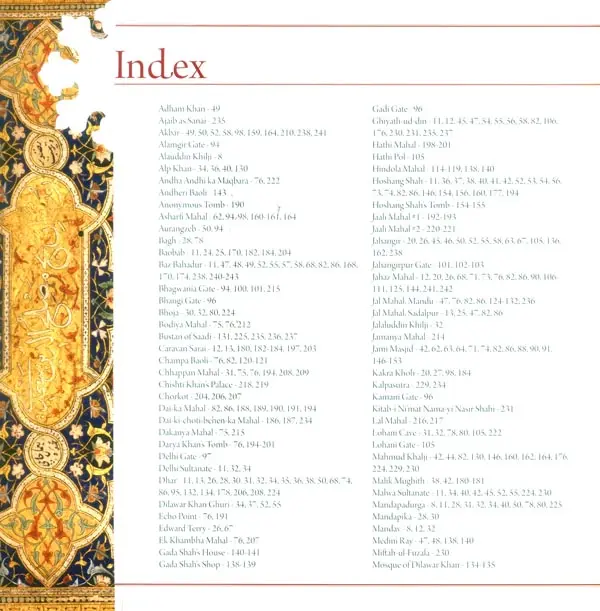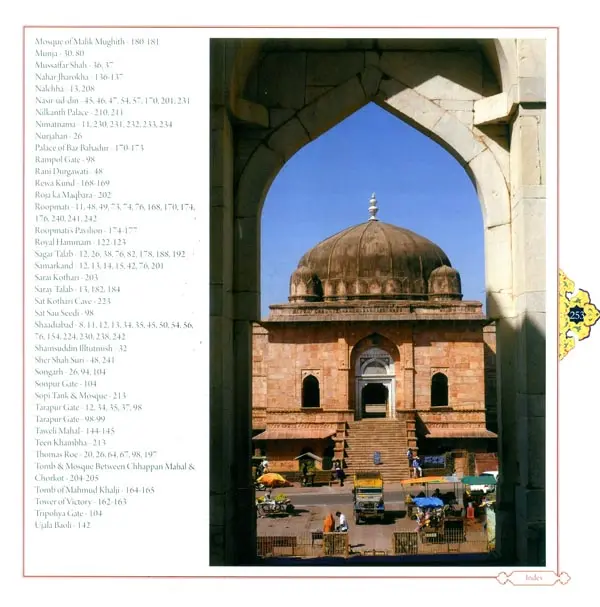
The Magic of Mandu- Suhur-e-Shaadiabad
Book Specification
| Item Code: | UAF125 |
| Publisher: | Resurrect Books |
| Language: | English |
| Edition: | 2019 |
| ISBN: | 9788193208540 |
| Pages: | 254 (Throughout Color Illustrations) |
| Cover: | HARDCOVER |
| Other Details | 8.50 X 8.50 inch |
| Weight | 890 gm |
Book Description
Mandu is one such site which, because of its relative remoteness, lack of access and media exposure, has not received the public focus and' administrative attention that is its rightful due. For that reason alone this beautifully illustrated, superbly designed, meticulously researched and truthfully portrayed, splendid book - "The Magic of Mandu : Shaadiabad' by Dr. Mamoun Sakkal, Malay Mandal, Ankita Roy and others, is such an outstanding contribution to the cause of Mandu, as it is to art literature and medieval history of Central India.
In circumference of its fortifications some 60 kilometers long, Mandu is the largest fort in the world, a shade larger than the famous fort of Ranikot opposite Kirthar national Park in Sindh, Pakistan, where the Amirs of Sindh were incarcerated after their defeat by General Charles James rapier during the Governor-general ship of Lord Dalhousie. And of course, Mandu is much larger than the more famous forts of the world - Aligarh, Chittorgarh, Gwalior, Kalinjar, Gawilgarh of India, Masada of Israel and Bala Hissar of Afghanistan.
Like the Chinar (Platens oriental is) of Kashmir, the African Baobab (Adenosine digitations) is an exotic tree species found mostly in West-Central India, brought in during the medieval period by overseas traders. Nowhere in India does this immense- bodied tree grow in such profusion as in Mandu.
Mughal Emperor Jahangir and his nimrod Empress Nur Jahan shot both lions and tigers in and around Mandu, proving yet again the coexistence of both these greatest felines of India in the same habitat.
Sir Thomas Roe, the ambassador of King James I of England to the Court of Jahangir, had problems with lions while camping at alpha, just outside of Mandu. When I was the District Magistrate and Collector of Dhar District in which Mandu is situated, in 1965, both the lion and the tiger had long gone, but I did see a large male leopard eating its kill, from the ramparts of Asharfi Mahal, opposite the Jami Masjid, right in the middle of Mandu.
Pollution and haze was much less five decades ago and on a clear day in the monsoon - the best time to be in Mandu - one could see from Roopmatis pavilion, her native town of Dharampuri, on the banks of the armada, without the aid of a pair of bur oculars. Rani Roopmati, the consort of Baz Bahadur, both icons of conjugal love and of inter -caste marriage, as much a part of the mystique of Mandu as Rani Padmini is of Chittorgarh. As the legend goes, she had a vow to worship the River armada each day, so Baz Bahadur built her this pavilion from where she could fulfil her vow.
I have a personal affection for Mandu. As the showpiece of my first district as Collector, as a retreat from the travails of work during a horrendous serial draught during which some. Ialakh workers came to 'scarcity works' on an output related wage not exceeding 1.50 Rs. a day, its vast and widely spread monuments of diverse architectural design so attractive to a student of history, its climate and ambience, Mandu will always retain a special place in my life experience. But there was something more.
With the famine looming large, was given a very short leave to get married. Mandu is where we had our piecemeal honeymoon - if one can call it that - spread over a year. The fact that we were de-silting the tanks, improving and building roads including one from the baking Nimar plains below Mandu and had given 'scarcity funds' to the Archaeology Department to repair the monuments, provided me with an excuse to periodically escape to Mandu.
[compliment the publisher, for commissioning this work, which 1 hope would be a precursor of others such, showcasing other lesser known but outstanding repositories of lndias cultural heritage.
However, one such prominent outcrop went beyond ~him obvious and reached the zenith of urban sophistication. Mandapadurga, Mandav, Mandu and Shaadiabad - as it has been known at different times, has human imprints dating back to the 6th century.
Starting with caved shelters, in and around prestent day Mandu, Mandapadurga's sacredness spiraled with creation of lofty temples, horst by the Pratiharas and later the Paramaras. Soon the growing fame of the Paramaras started to attract pursuers - first from neighboring Hindu kingdoms and later by Islaolic invaders from the North. As a result of these barbaric invasions, by the early 14'h century, Alauddin Khilji had taken over large tracts of Malwa.
After an initial period of uncertainty, finally peace prevailed in Malwa with the administration in control of governors appointed by the Delhi Sultanate. Although Dhar became the new political capital of the Malwa Sultanate, Mandu (Mandapadurga) emerged as the royal favorite for retreat and recreation. In the early 15th century, foundations of a new imperial capital were laid in these very balmy clines by Hoshang Shah. The rebellious Hoshang, who later became Sultan Hoshang Shah, directed all. his energies for creating the city of his dreams. Building upon his pioneered).g work, Hoshangs successors let no stone unturned in adding to the pomp and grandeur of this expanding metropolis. The culmination of this magnificence was reached under Ghiyath-uddin who added new threads of artistic and cultural sophistication in the prevailing fibers of architectural and military excellence. This led to the creation of a fantasy land that by all means surpassed the supremacy of any other human settlement in the world.
Shaadiabad -literally the city of joy - was the name given to this opulent human settlement where new heights were reached in spheres of architecture, art and culture. If the architects of Shaadiabad gave us the first edifice of white marble in the Indian Subcontinent, the painters of Ghiyath-uddin left us with the exquisitely crafted Nimatnama- the first illustrated cook book in the world. It was the congeniality of Shaadiabad's air that worked as a prelude for the legendary romance between Baz Bahadur and Roopmati, Their innumerable love songs still reverberate through the region and so does the story about Roopmatis heroic sacrifice for her love. 0n one could have ever imagined that luster of this city of opulence would ever diminish but destiny had a different script altogether.
Shaadiabad's decline started with the defeat of Baz Bahadur and it took nearly a century for the imperial imprints to fade. As the grand edifices went into disrepair, followed by looting and pillage, nature came back to take charge, covering the entire plateau with a sheet of green.
Book's Contents and Sample Pages
